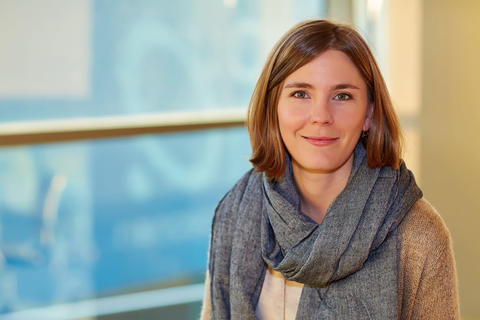News
Fast and selective optical heating for functional nanomagnetic metamaterials
In a recent article published in Nanoscale, researchers from the Nanomagnetism group at nanoGUNE demonstrate the use of hybrid magnetic-plasmonic elements to facilitate contactless and selective temperature control in magnetic functional metamaterials. Compared to so-far used global heating schemes, which are slow and energy-costly, light-controlled heating, using optical degrees of freedom such as light wavelength, polarisation, and power, allows to implement local, efficient, and fast heating schemes for the use in nanomagnetic computation or to quantify collective emergent phenomena in artificial spin systems.
CIC nanoGUNE joins the Packaging Cluster
As CIC nanoGUNE becomes involved in social awareness about finding alternatives to plastic, it has internally committed itself towards a technology that could offer fully biodegradable packaging. One strategic step in this direction is nanoGUNE’s recent membership of the Packaging Cluster.
The first loudspeaker with graphene-based technology is already on the market
Researchers in the Nanobiomechanics group at CIC nanoGUNE and engineers at SEAS Fabrikker, leader in the premium-range audio loudspeaker sector, have conducted joint research in which they have succeeded in improving the loudspeaker cones, thanks to graphene. These premium-range loudspeakers with graphene-based technology resulting from this collaboration have recently been launched onto the market by the Norwegian company.
nanoGUNE joins the Basque Health Cluster
nanoGUNE is proud to be part of one of the region’s most important and active clusters: the Basque Health Cluster.
International Day of Women and Girls in Science brought to Donostia-San Sebastian by four research centres
The research centres Donostia International Physics Center (DIPC), the Centre for Materials Physics (CFM CSIC-UPV/EHU), CIC nanoGUNE and CIC biomaGUNE have joined forces to present a joint programme to mark International Day of Women and Girls in Science, being held worldwide on Monday, 11 February. In Donostia-San Sebastian the programme will go on until Friday 15 February with public talks, workshops, visits and seminars in which 50 volunteers from the organising research centres will be participating. The aim of the initiative is to transmit a clear message: Science is girls’ stuff.
CIC nanoGUNE: a decade of science, collaboration, training and transfer
Nanoscience and nanotechnology are already and are set to become the great architects of true transformations. The production of graphene, for example, which everyone regards as a material of the future owing to the numerous properties it is capable of bringing together, would have been impossible without the advances in nanotechnology and without the knowledge generated by research teams such as that of nanoGUNE. Research into nanoscience and nanotechnology calls for highly sophisticated architectural and engineering conditions that make it possible to tackle experiments that would be impossible at an ordinary facility. NanoGUNE built a state-of-the-art infrastructure for this purpose ten years ago.
Researchers discover directional and long-lived nanolight in a 2D material
An international team led by researchers from Monash University (Melbourne, Australia), University of Oviedo (Asturias, Spain), CIC nanoGUNE (San Sebastián, Spain), and Soochow University (Suzhou, China) discover squeezed light ('nanolight') in the nanoscale that propagates only in specific directions along thin slabs of molybdenum trioxide – a natural anisotropic 2D material –. Besides its unique directional character, this nanolight lives for an exceptionally long time, and thus could find applications in signal processing, sensing or heat management at the nanoscale.
Over 650 graphene stars meet in San Sebastian
The international Graphene Week 2018 congress kicked off today at the Kursaal Conference Centre in Donostia-San Sebastian; its local organiser is the CIC nanoGUNE research centre. This congress is the main conference of the Graphene Flagship, one of the biggest European research projects in history with over 150 members and funding to the tune of 1,000 million euros.
Nano-imaging of intersubband transitions in few-layer 2D materials
nanoGUNE participates in a collaboration led by ICFO (further including the Institut Lumière Matière - CNRS, Technical University of Denmark, Max Planck Institute for the Structure and Dynamics of Matter, and the National Graphene Institute), which reports on the first observation of intersubband transitions in 2D materials via scattering scanning near-field optical microscopy. The results published in Nature Nanotechnology pave the way towards an unexplored field in this new class of materials and offer a first glimpse of the physics and technology enabled by intersubband transitions in 2D materials.
Saioa Cobo, "Junior Member of the University Institute of France"
Agenda
| Mon | Tue | Wed | Thu | Fri | Sat | Sun |
|---|---|---|---|---|---|---|
|
28
|
29
|
30
|
31
|
1
|
2
|
3
|
|
|
|
|
|
|
|
|
|
4
|
5
|
6
|
7
|
9
|
10
|
|
|
|
|
|
|
|
|
|
|
11
|
12
|
14
|
15
|
16
|
17
|
|
|
|
|
|
|
|
|
|
|
18
|
19
|
20
|
21
|
23
|
24
|
|
|
|
|
|
|
|
|
|
|
26
|
27
|
28
|
29
|
30
|
1
|
|
|
|
|
|
|
|
|
Events
- 31/03/2025 to 04/04/2025
Spin & Orbit
nanoVISUALS
Find events' photos, experimental images, videos, audios, and nanoGUNE's corporate images.





